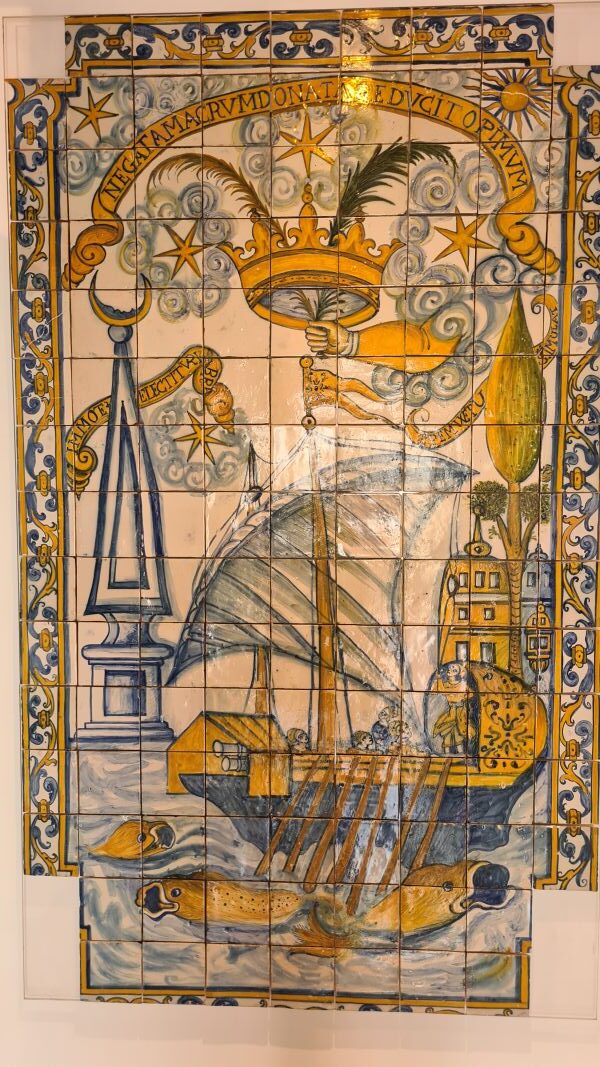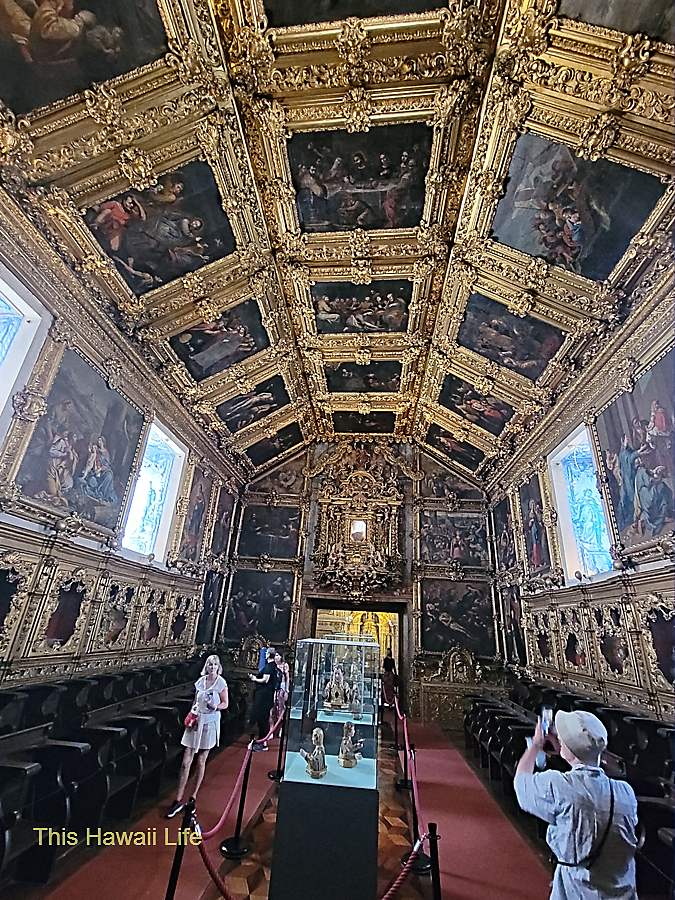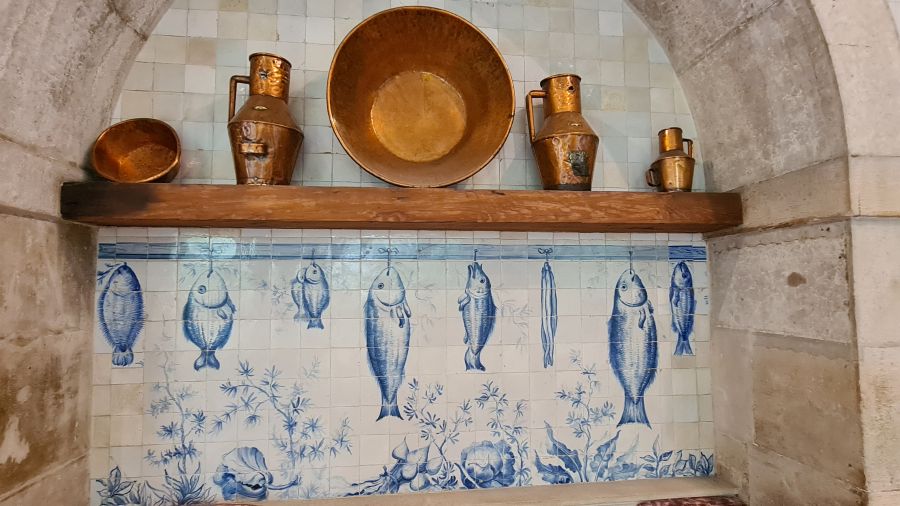Visit the National Tile Museum of Portugal
Here’s an engaging introduction with a call to action:Step inside one of Portugal’s most impressive cultural treasures—the National Tile Museum (Museu Nacional do Azulejo)—where centuries of art, history, and storytelling unfold in a kaleidoscope of color. Housed in a former convent and showcasing everything from early Moorish designs to elaborate Baroque masterpieces, this museum offers a captivating journey through Portugal’s iconic azulejo tradition. Whether you’re an art enthusiast, a history lover, or simply curious about the country’s creative soul, the National Tile Museum promises a truly immersive experience.
Make time to explore this extraordinary collection and let Portugal’s most beautiful tiles inspire your next adventure.

The National Tile Museum of Portugal – stunning history, beautiful tiles, gorgeous galleries in a restored convent

What You’ll See: Museum Galleries & Highlights
1. Techniques Room (Ground Floor)
-
- This is where the story be
It offers a great foundation to understand how azulejos evolved in Portugal.
2. Chronological Exhibition (Permanent Collection)
- The collection is arranged chronologically, tracing the evolution of tile art from the late 15th century to modern designs.
- Early galleries highlight Moorish-inspired and geometric designs, reflecting the influence of Islamic art on the Iberian Peninsula.
- As you progress, you’ll move into Mannerist and Baroque periods where tiles become more pictorial and narrative, including large figurative panels.
- Some standout pieces:
- The “Hunting Room” (Sala da Caça): dramatic panels showing animal hunts, originally from a noble residence.
- The “Grande Panorama de Lisboa”: a massive tile mural showing Lisbon before the 1755 earthquake.
- Retables like Nossa Senhora da Vida (Our Lady of Life) from the 16th century.

3. Convent Architecture & Religious Spaces
-
- The museum is housed in the former Convent of Madre de Deus, and parts of the convent itself are part of the exhibition: the church, choir, sacristy, and chapel.
- The church is richly decorated in Baroque style, combining gilded woodwork, paintings, and tile panels.
- There’s a cloister (or cloisters) — the Renaissance cloister and a smaller Manueline cloister — that are themselves works of art.
- The Chapel of Saint Anthony and the High Choir are also particularly ornate.
4. Modern & Contemporary Tile Art
- On the upper floors, the museum displays 20th- and 21st-century tile works, including experimental and contemporary designs.
There are works by modern Portuguese artists, and even Ming-style tiles (16th century) to show cross-cultural influences.
5. Temporary Exhibition Rooms
- The museum has two rooms dedicated to rotating exhibitions.
- These often feature contemporary artists, tile factories, or thematic tile art. For example, a recent exhibition celebrated 175 years of the Viúva Lamego tile factory.
Tips for Visiting
- Download the MNAz App / Use the Audio Guide
The museum has a mobile app that acts as an audio guide in multiple languages (English, Portuguese, international sign, etc.). This helps you understand the pieces more deeply and gives context to the historical and artistic stories. - Accessibility Matters
- There are 17 tactile tile replicas in bas-relief plus Braille labels.
- The museum has video guides in sign language.
- Wheelchair access is available via ramps and lifts.
- Join a Guided Tour
- The museum offers free guided tours of the permanent collection on the 1st and 3rd Sundays of the month at 10:30 AM.
- For a more structured visit, book a guided group tour in advance (especially helpful for larger groups).
- Respect the Spaces
- The site is not only a museum but a historic convent; when you visit the cloisters, church, and chapel, take a moment to appreciate the architecture and quiet atmosphere.
- Photography is generally allowed, but follow any posted rules (especially for large tile panels).
- Avoid touching delicate tile works — unless it’s explicitly permitted (e.g., some interactive or tactile pieces).
- Plan Enough Time
- Allow at least 1–1.5 hours to go through the permanent exhibition, explore the convent areas, and enjoy the cloisters.
- If there’s a temporary exhibition, you may want to add more time.
- Best Time to Go for a Quieter Visit
- Try visiting early in the morning when the museum opens, or later in the afternoon, to avoid the peak crowds.
- If using public transportation or ride share, note that while the museum isn’t in the busiest tourist core, it’s not super far from neighborhoods like Alfama or Graça. (Some travelers mention it’s easier to grab a taxi or ride after the visit.)
- Combine With Nearby Attractions
- After visiting, consider heading to nearby Lisbon neighborhoods for food, views, or murals.
- Use transport cards like the Lisboa Card – it might help with transit savings if you’re planning to visit other sites.
Why These Galleries Matter
- The museum offers a full historical arc — from early Moorish-style tiles to avant-garde contemporary works — which makes it not just about decorative art but a lens into Portugal’s social, political, and religious history.
- The convent architecture enriches the experience: you’re not just looking at tiles in isolation, but in a deeply historical, sacred, and beautifully preserved space.
- The interactivity and accessibility (audio guides, tactile replicas, sign-language video) make the visit inclusive and engaging for a wide variety of visitors. (Museu Azulejo)

Details to your visit
The National Tile Museum (Museu Nacional do Azulejo) in Portugal information to visiting:
- Address: Rua da Madre de Deus, 4, 1900-312 Lisboa, Portugal
- Opening Hours: Tuesday to Sunday, 10:00 AM – 6:00 PM; last entry at 5:15 PM.
- Closed On: Mondays, January 1, Easter Sunday, May 1, June 13, December 25.
- Phone: +351 218 100 340
- Website: museunacionaldoazulejo.pt (Museu Azulejo)

Dining Venue at the National Tile Museum (Museu Nacional do Azulejo)
Cafeteria / Café
-
- The museum has a cafeteria (“Cafetaria”) that offers a broad range of gastronomic specialties.
- The interior of the café is beautifully decorated with 19th-century azulejos (tiles), originally from a palace kitchen in Lisbon
- There is also a terrace in what is called the “Winter Garden” (Jardim de Inverno), providing a more open, garden-like space for dining or relaxing.
- The café space (and other areas like the Winter Garden and Cloister of D. João III) can be rented for private or corporate events, which makes the dining venue quite versatile and historic. (Museu Azulejo)
![Good question. Here’s a description of the **dining venue** at the **Museu Nacional do Azulejo** (National Tile Museum) in Lisbon, based on information from their site and other sources: --- ### Dining Venue at the National Tile Museum (Museu Nacional do Azulejo) 1. **Cafeteria / Café** * The museum has a **cafeteria** (“Cafetaria”) that offers a broad range of gastronomic specialties. ([Museu Azulejo][1]) * The interior of the café is beautifully decorated with **19th-century azulejos (tiles)**, originally from a palace kitchen in Lisbon. ([Museu Azulejo][2]) * There is also a **terrace** in what is called the “Winter Garden” (Jardim de Inverno), providing a more open, garden-like space for dining or relaxing. ([Museu Azulejo][1]) * The café space (and other areas like the Winter Garden and Cloister of D. João III) can be **rented for private or corporate events**, which makes the dining venue quite versatile and historic. ([Museu Azulejo][2]) 2. **Restaurant** * In addition to the café, there’s a **restaurant** set in the old convent kitchens of the former Convento da Madre de Deus (“Mother of God Convent”). ([All About Portugal][3]) * The walls are tiled — quite fitting for a tile museum — using azulejos that originally came from a historic smokehouse kitchen in Lisbon. ([All About Portugal][3]) * The restaurant is fairly modest in size: according to their event rental info, the restaurant room holds **about 120 m²**. * There’s also a **garden area** (the Winter Garden) and the cloister, which can be used for dining or events. * In terms of cuisine, it is described as **traditional Portuguese**, in a “historic, but informal” atmosphere. ([All About Portugal][4]) * According to Tripadvisor, the restaurant/café is a good place for lunch or coffee, with reasonable prices, and has both indoor seating and outdoor tables. ([Tripadvisor][5]) * Specific dishes mentioned in some reviews or guides include Portuguese staples like **bacalhau (cod)** dishes, pork, crepes, and desserts like bolo de bolacha or nut-based sweets. ([lifecooler.com][6]) * The average reported price is around **€15**. ([lifecooler.com][6]) 3. **Ambience & Atmosphere** * The café and restaurant spaces are **very atmospheric**: tiled walls, historical architecture from the old convent, and a peaceful garden-terrace makes it a pleasant place to rest in between gallery visits. ([lifecooler.com][6]) * The Winter Garden adds a sense of calm and history, giving guests a break in a green, light-filled area. ([Museu Azulejo][1]) * According to travel guides, the café is “pretty” and features food-themed tiles (e.g. fish, grapes) that show off the museum’s tile heritage. ([The Geographical Cure][7]) 4. **Practical Info** * Location: Rua da Madre de Deus, 4, 1900-312 Lisbon. ([lifecooler.com][6]) * Opening hours for the café / restaurant roughly align with the museum’s hours (the café is open when the museum is, though "CLOSED" is marked in some event-rental contexts — check the museum’s official site for up-to-date hours). ([Museu Azulejo][2]) * Accessibility: Reviews mention that the restaurant is **wheelchair accessible**. ([Tripadvisor][8]) * The venue offers both **indoor and outdoor seating** (terrace), making it flexible for different preferences. ([lifecooler.com][6]) * For events: The restaurant area, Winter Garden, and cloister are rentable, making the space possible for private dinners or corporate functions. --- **Summary / Impression**: The dining venue at the National Tile Museum is more than just a café — it’s a historically rich, architecturally beautiful space that complements the museum’s tile-centered theme. Whether you’re grabbing a light snack in the winter garden or enjoying a more substantial Portuguese lunch in the tiled restaurant, it’s a place where the cultural and culinary experiences blend nicely. --- If you like, I can pull up the **current menu (2025)** for the museum restaurant—do you want me to check? [1]: https://www.museunacionaldoazulejo.pt/cafetaria?utm_source=chatgpt.com "CAFETARIA | Museu Azulejo" [2]: https://www.museunacionaldoazulejo.pt/en/cafetaria?utm_source=chatgpt.com "CAFETARIA | Museu Azulejo" [3]: https://www.allaboutportugal.pt/en/lisboa/restaurants/restaurante-do-museu-nacional-do-azulejo?utm_source=chatgpt.com "Restaurante do Museu Nacional do Azulejo | Restaurant, Lisboa | All About Portugal" [4]: https://www.allaboutportugal.pt/pt/lisboa/restaurantes/restaurante-do-museu-nacional-do-azulejo?utm_source=chatgpt.com "Restaurante do Museu Nacional do Azulejo | Restaurante, Lisboa | All About Portugal" [5]: https://www.tripadvisor.com.br/Restaurant_Review-g189158-d1940830-Reviews-Ristorante_Caffetteria_Museu_Nacional_do_Azulejo-Lisbon_Lisbon_District_Central_P.html?utm_source=chatgpt.com "RISTORANTE CAFFETTERIA MUSEU NACIONAL DO AZULEJO, Lisboa - Comentários de Restaurantes, Fotos & Número de Telefone" [6]: https://lifecooler.com/artigo/comer/restaurante-do-museu-nacional-do-azulejo/428206/?utm_source=chatgpt.com "Restaurante do Museu Nacional do Azulejo" [7]: https://www.thegeographicalcure.com/post/lisbon-s-azulejo-museum?utm_source=chatgpt.com "Lisbon’s Azulejo Museum: A Tile Lover’s Must-See - The Geographical Cure" [8]: https://www.tripadvisor.pt/Restaurant_Review-g189158-d1940830-Reviews-Ristorante_Caffetteria_Museu_Nacional_do_Azulejo-Lisbon_Lisbon_District_Central_P.html?utm_source=chatgpt.com "RISTORANTE CAFFETTERIA MUSEU NACIONAL DO AZULEJO, Lisboa - Comentários de Restaurantes, Fotos & Número de Telefone"](https://visitspainandmediterranean.com/wp-content/uploads/2025/11/Dining-at-the-national-tile-museum.jpg)
Restaurant venue
-
- In addition to the café, there’s a restaurant set in the old convent kitchens of the former Convento da Madre de Deus (“Mother of God Convent”). (All About Portugal)
- The walls are tiled — quite fitting for a tile museum — using azulejos that originally came from a historic smokehouse kitchen in Lisbon. The restaurant is fairly modest in size: according to their event rental info, the restaurant room holds about 120 m².
- There’s also a garden area (the Winter Garden) and the cloister, which can be used for dining or events.
- In terms of cuisine, it is described as traditional Portuguese, in a “historic, but informal” atmosphere.
- According to Tripadvisor, the restaurant/café is a good place for lunch or coffee, with reasonable prices, and has both indoor seating and outdoor tables.
Specific dishes mentioned in some reviews or guides include Portuguese staples like bacalhau (cod) dishes, pork, crepes, and desserts like bolo de bolacha or nut-based sweets.
Ambience & Atmosphere
- The café and restaurant spaces are very atmospheric: tiled walls, historical architecture from the old convent, and a peaceful garden-terrace makes it a pleasant place to rest in between gallery visits.
- The Winter Garden adds a sense of calm and history, giving guests a break in a green, light-filled area. (Museu Azulejo)
According to travel guides, the café is “pretty” and features food-themed tiles (e.g. fish, grapes) that show off the museum’s tile heritage.
Practical Info
- Location: Rua da Madre de Deus, 4, 1900-312 Lisbon.
- Opening hours for the café / restaurant roughly align with the museum’s hours (the café is open when the museum is, though “CLOSED” is marked in some event-rental contexts — check the museum’s official site for up-to-date hours). (Museu Azulejo)
- Accessibility: Reviews mention that the restaurant is wheelchair accessible.
- The venue offers both indoor and outdoor seating (terrace), making it flexible for different preferences.
- For events: The restaurant area, Winter Garden, and cloister are rentable, making the space possible for private dinners or corporate functions.

Further Reading to visiting Lisbon
Exploring Lisbon’s Alfama district
Conclusion to visiting the National Tile Museum of Portugal
Visiting the National Tile Museum of Portugal is more than an artistic outing—it’s a journey through the country’s soul. From centuries-old masterpieces to modern interpretations, the museum beautifully reveals how azulejos have shaped Portugal’s identity, architecture, and storytelling. Wandering through its galleries, cloisters, and convent halls offers a serene yet inspiring experience that connects you to the creativity and history woven into every tile.
Don’t miss the chance to explore this cultural treasure for yourself—plan your visit to the National Tile Museum and let Portugal’s vibrant artistry ignite your imagination.

About author – Noel Morata
After relocating from the United States to Andalusia in 2024, I’ve made it my mission to discover every corner of Spain along with many Mediterranean locations, cities and attractions. Based just east of Granada, I’ve spent a lot of time visiting Lisbon and around Portugal including multiple extended visits to the Algarve region, Sintra, Caiscais and the middle parts of the country throughout different seasons. My background in history cultural studies and years of residence and exploring all of the Mediterranean countries have given me unique insight into the region’s historical significance, local customs, and culinary traditions.
Lisbon is a wonderful city to explore and filled with many historic treasures, sites and views and the Alfama district is a must visit to the old town and key landmarks like the National Tile Museum on the edge of the Alfama District. Definitely make some time to visit this stunning museum to give you more inspiration to visiting and enjoying this art.
I regularly update my guides with the latest information gathered through personal visits and relationships with local tourism officials, always seeking what’s new and exciting in each destination. As a self-proclaimed foodie, I’m passionate about discovering authentic local markets and regional specialties.

